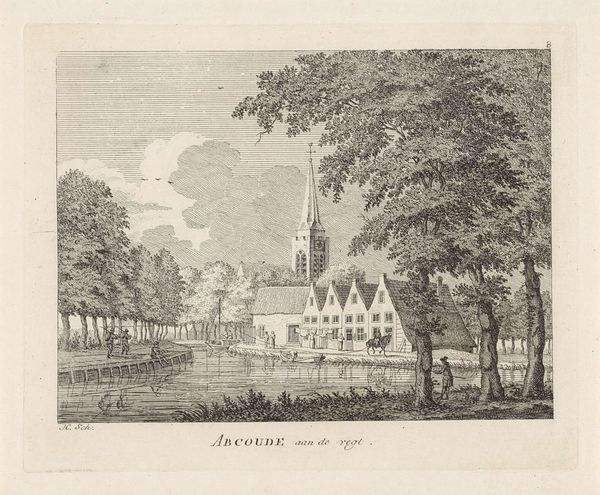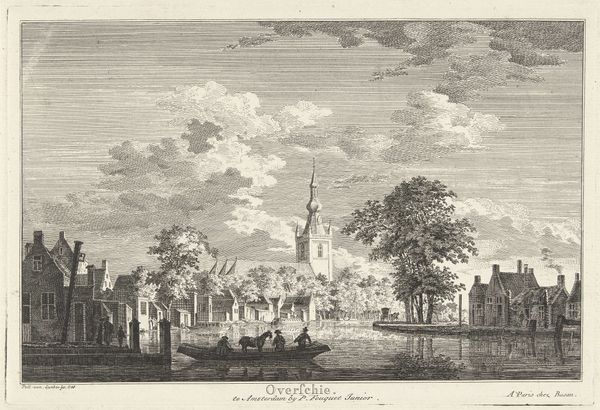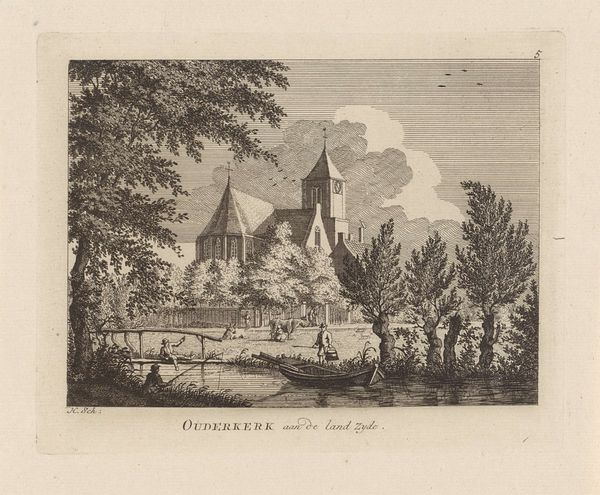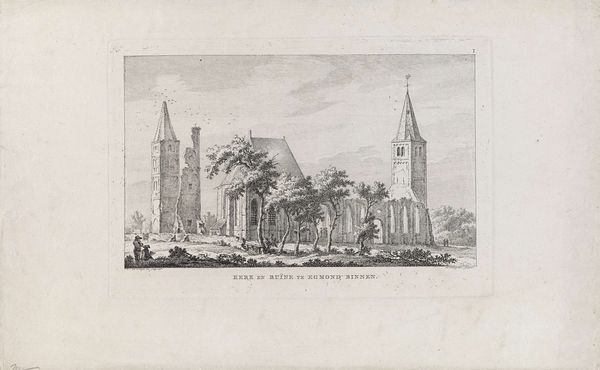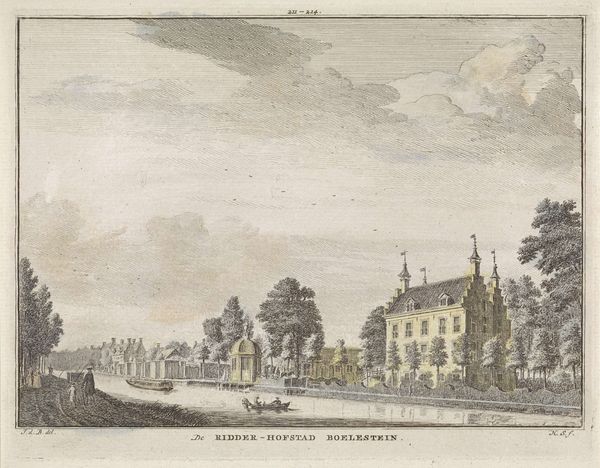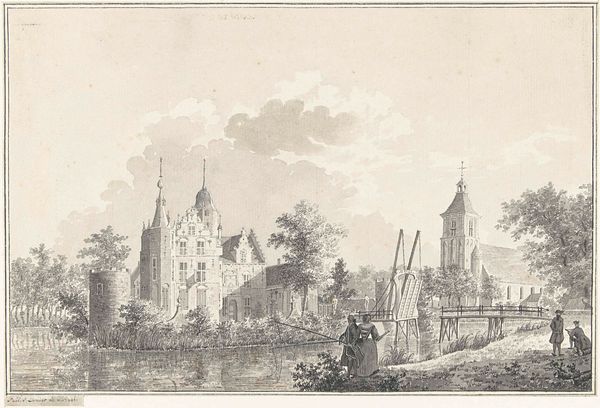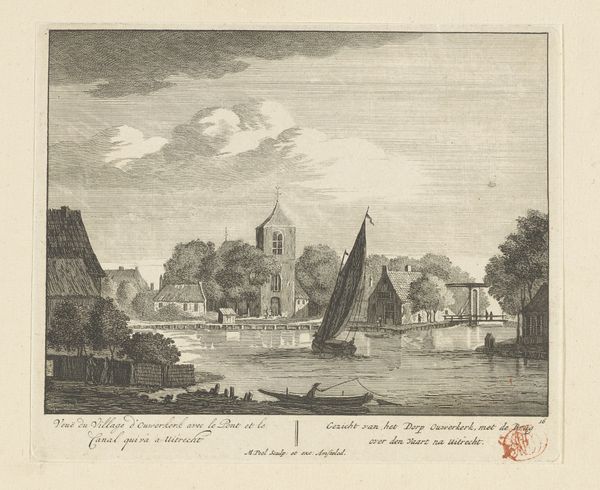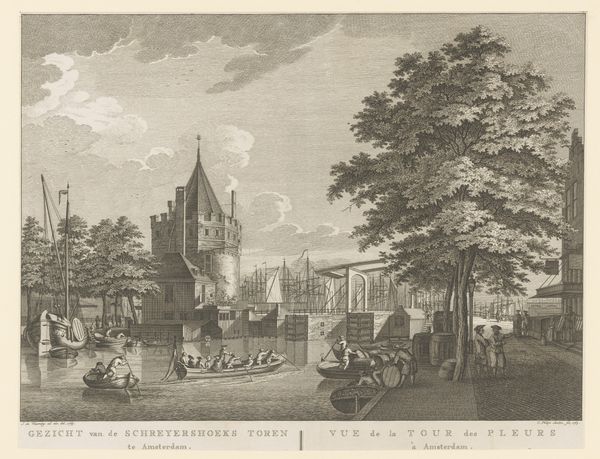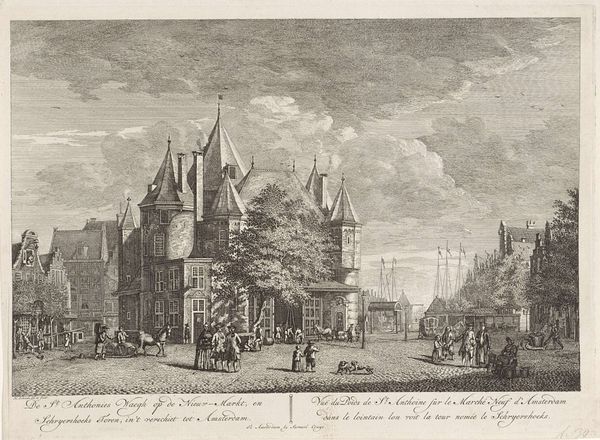
#
pencil drawn
#
aged paper
#
light pencil work
#
photo restoration
#
pencil sketch
#
old engraving style
#
sketch book
#
personal sketchbook
#
pen-ink sketch
#
pencil work
Dimensions: height 172 mm, width 206 mm
Copyright: Rijks Museum: Open Domain
Hermanus Petrus Schouten created this print of the Oosterwijk House and Church, in the Netherlands. Schouten lived through the Batavian Revolution, a period of political, social and cultural upheaval, influenced by Enlightenment ideals. This idyllic image reflects the societal hierarchies of the time. The nobility, symbolized by their grand house, were at the top, while the church represented spiritual authority. The working class is subtly depicted by the fisherman. The inclusion of both church and manor emphasizes the established power structure, with religious and aristocratic elements coexisting in the landscape. Interestingly, Schouten, who aligned with the Patriot movement, which sought to diminish the power of the stadtholder and the aristocracy, created this artwork. Was he attempting to reconcile with the established order through his art, or was this a reflection of the changing social landscape? This image serves not just as a depiction of a place, but as a mirror reflecting the complexities of identity, power, and societal change in the late 18th century.
Comments
No comments
Be the first to comment and join the conversation on the ultimate creative platform.

